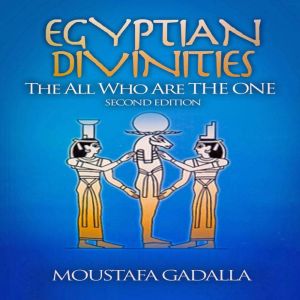Synopsis
Details more than 80 Egyptian divinities(gods, goddesses) and their specific roles.This Expanded Version of the book consists of two Parts with a total of 12 Chapters. Part I : The All Who Are THE ONE consists of seven chapters 1 through 7, as follows: Chapter 1: The One is ALL explains that far from being a primitive, polytheistic form, the Egyptians' ideology is the highest expression of monotheistic mysticism. Chapter 2: The Divine Energies of The Creation Cycle covers the role of the divine energies in the creation cycle which accords with scientific principles; and how such divine energies were recognized in later creeds as 'Angels of God'. Chapter 3: Manifestation of Neteru in The Orderly Creation Process covers such manifestation into three primary phases, in the Egyptian creation process accounts. Chapter 4: Understanding Names, Epithets & Titles covers the real secret names and how Egyptians used epithets and titles when referring to the divine energies. Chapter 5: Narration of Their Manifestations explains how the cosmological knowledge of Ancient Egypt was expressed in a story form, which is a superior means for expressing both physical and metaphysical concepts. Chapter 6: Common Misrepresentations of the Divinities in Egypt covers examples of such misrepresnations and provides the real intended representations Chapter 7: Man and The Divine Forces covers man's place in the universal order . Part II : The Roles of Most Recognized Neteru consists of five chapters 8 through 12, as follows: Chapter 8: Mystical Pictorial Depictions covers pictorial symbolism of the Neteru. Chapter 9: Most Common Animals and Birds Forms Neteru covers the metaphysical significance of several animal images such as that of the ass, baboon, beetle, Bennu/Benben, bulls, cat, cows ;, crocodile, dog, egg, falcon, feather, fish, frog, goose, hare, heron, hippopotamus, horse, ibis, lions [lion, lioness & twin-lions(Aker)], Phoenix, rams, serpents, stork, vulture, and winged sun. Chapter 10: Most Common Male & Androgynous Human Forms Divinities covers the metaphysical significance of several male and androgynous human form images such as:Amon, Anubis (Anbu,Ubuat ,Web-wawet), Apis(Epaphus,Hapis), Aton (Adon), Atum (Atem,Atom, Atam),Bes, Geb(Seb, Keb), Hapi (Hepr),Herishef , Horus Khepri (Khepera), Khnum, Khonsu(Khons), Min(Menu, Amsi, Kamutef), Nefertum --[also, The Triad Ptah-Sokaris-Nefertum],Nun/Nu/Ny, Osiris (Ausar, Usire, Asar), Ptah (Phtas, Vulcan), Re (Ra), Re Hor akhti (Rahorakhty), Reshpu(Reshef, Reseph), Sebek , (Sobek, Suchos), Seth(Set, Sutekh, Typhon), Sokaris, Shu, and Thoth Chapter 11: Most Common Female Human Forms Divinities covers the metaphysical significance of several female human form images such as: Isis (Auset,Ast)-- The divine female Principle/Principal, Anat, Bast (Bastet, Oubastis), Heket(Heqet), Hathor (Het-Hor, Het-Heru,Venus, Aphrodite) --[also- Mehet-Uret (Mehurt, Methyer)- Heru-sekha- Hesat - Merit- Tree Netrt(goddess) - Astrate/ Asera / Serah / Sarah- Notre Dame], Kadesh (Qadesh), Maat(Mayet), Merit, Mut, Nephthys (Nebt-het), Neith (Net), Nut, Satis (Satet), Sekhmet(Sekh-Mut, Sakhmet,Petesachmis), Selkis(Serket,Selkit,Serqet), Seshat(Safkhet, Sesat, Seshet, Sesheta, Seshata), Taurt(Taweret, Thoeris, Toeris), and Tefnut, Chapter 12: The Archetypal Synergies covers the complex and shifting array of relationships between the divine energies; and how such synergies are being manifested in various associations such as dualities, trinities, octads and Enneads.




